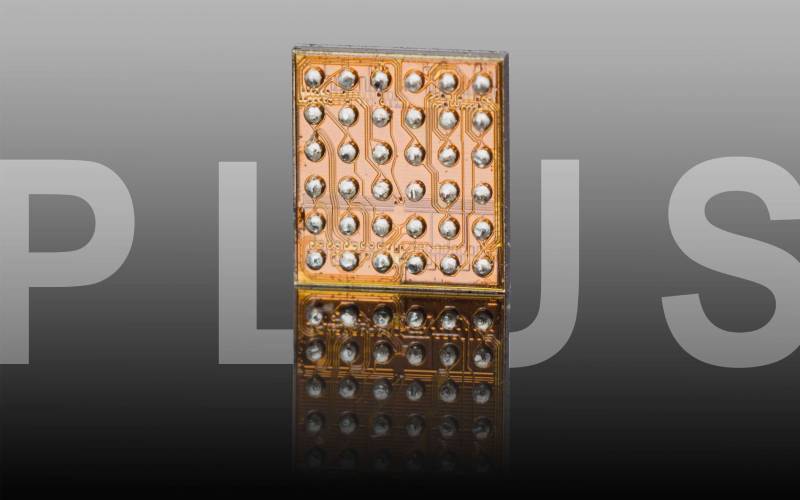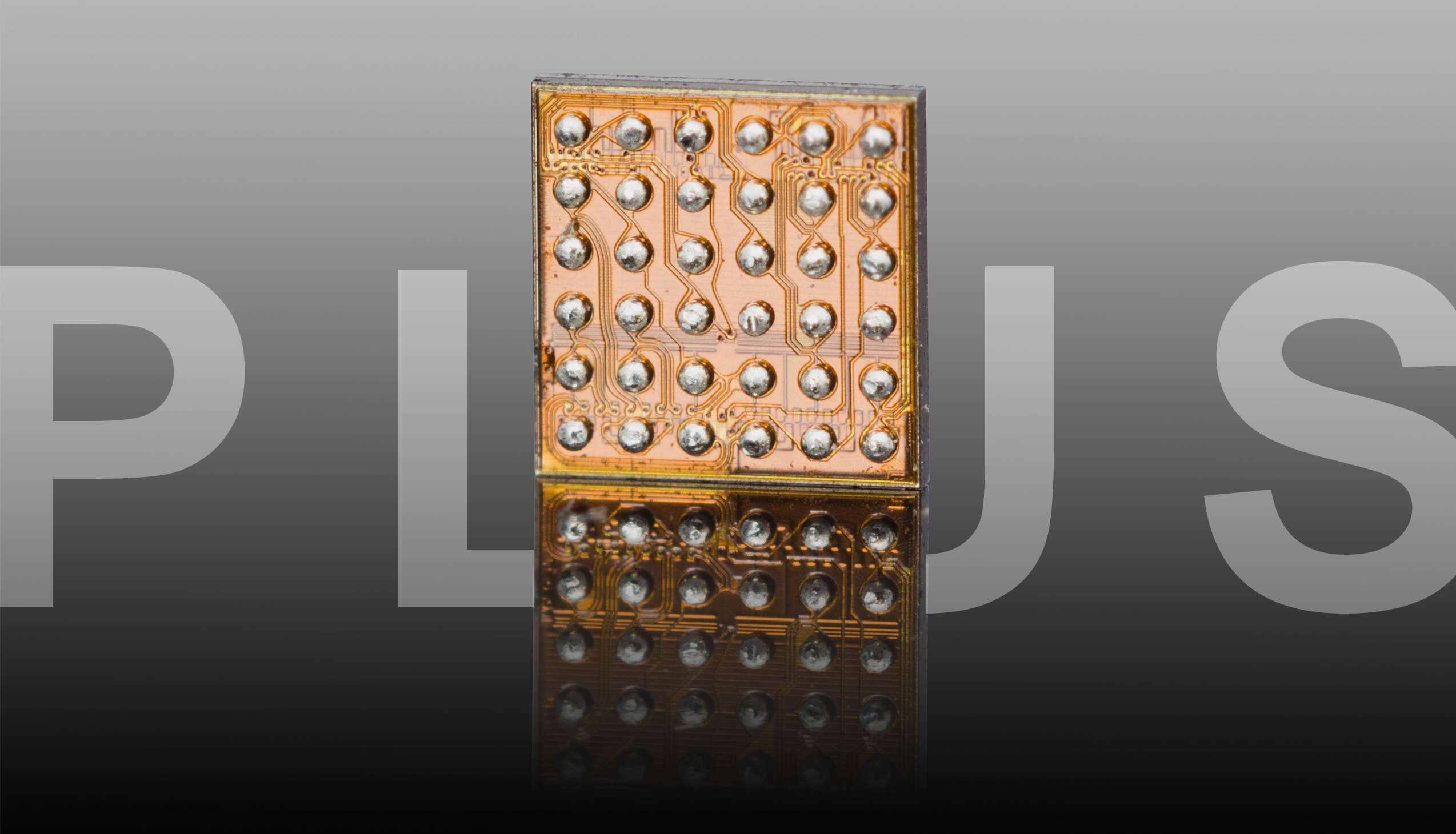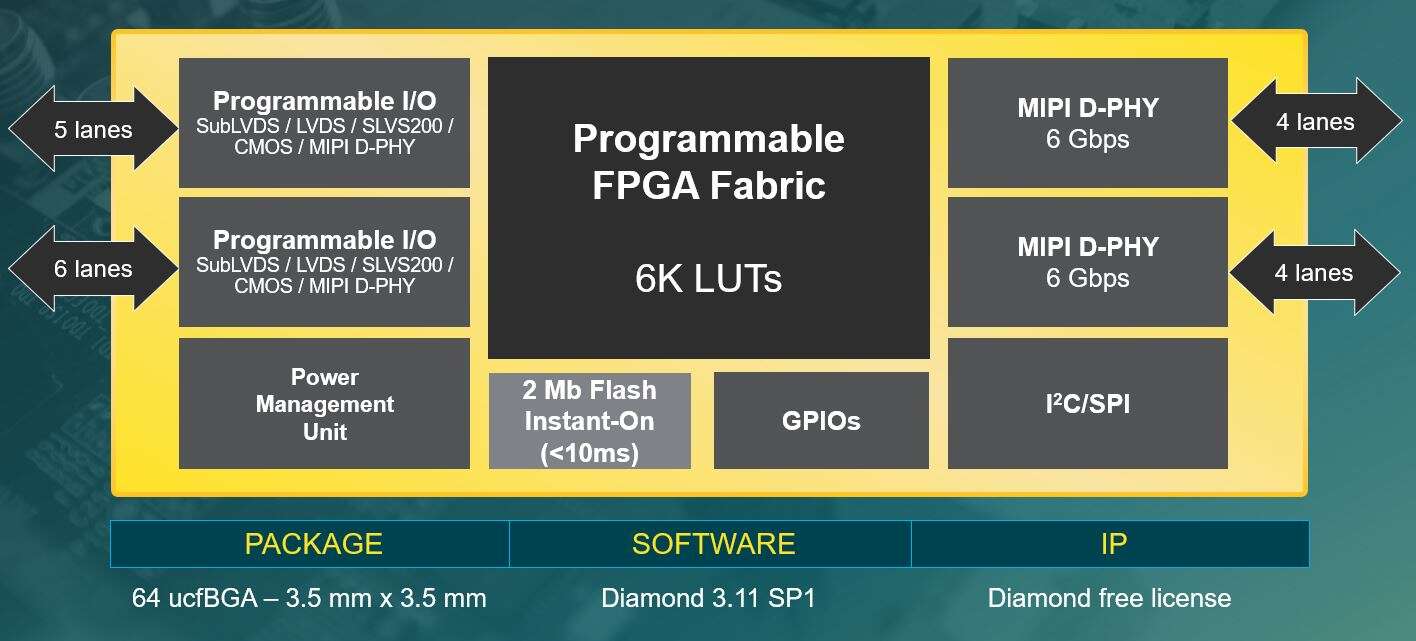Lattice Affirms Refocus with Instant-On Video Bridge
Article By : Sally Ward-Foxton

Silicon released ahead of schedule for MIPI bridge FPGA.
Neatly exemplifying the refocus detailed at the company’s financial analyst day earlier this year, Lattice has announced an improved version of its CrossLink video bridge FPGA which adds instant-on capability. The new device, released ahead of schedule, fits well with Lattice’s strategy to concentrate on low-power FPGAs for the higher-margin industrial, automotive and communications markets.
“CrossLinkPlus is available right now, ahead of schedule,” said Lattice’s Peiju Chiang, in an interview with EETimes. Originally scheduled for release at the end of 2019, “CrossLinkPlus is already sampling to industrial and automotive customers, and system bring-up is already in progress at our elite customers,” he said.

Originally scheduled for release at the end of 2019, CrossLinkPlus is available now (Image: Lattice Semiconductor)
CrossLinkPlus is an FPGA with a hardened MIPI-DPHY that can be used as a MIPI bridge, or to aggregate multiple sensors, pre-processing the data to offload the processor. It offers 12 Gbps total MIPI-DPHY bandwidth (two 6 Gbps ports) with power consumption as low as 300 µW standby power, or 5 mW operating power.
The new device has added 2Mb embedded Flash memory that enables instant-on, allowing boot up and configuration of the system within 10 ms. According to Lattice, the human brain perceives images after around 15 ms, so this feature represents a seamless transition from off to on, whereby the user shouldn’t notice any intermediate visual artefacts that happen during boot-up.
The device can also be used as a bridge in systems that use multiple displays, or where legacy displays with custom timing and resolution requirements are used. These are particularly common in industrial control equipment.
MIPI Ecosystem
The market for video bridges in industrial and automotive equipment is being driven by a call for consumer-electronics-like visual experiences from embedded vision systems, combined with a trend towards the adoption of MIPI systems, Chiang said.
Broad adoption of MIPI in the smartphone space is increasing the number of image sensors, displays and SoCs that support the MIPI standard, while MIPI tools and the rest of its ecosystem is developing quickly. Now reaching volumes that permit economies of scale, MIPI components are seeing increased uptake in industrial and automotive markets.

CrossLinkPlus includes 12 Gbps total MIPI-DPHY bandwidth (Image: Lattice Semiconductor)
Meanwhile, a key trend in automotive advanced driver assistance systems (ADAS) is the adoption of multiple image sensors – not just reversing cameras, tomorrow’s vehicles will have cameras on all sides – while processors that interface with these image sensors typically have limited interfaces and processing capability to handle multiple sensors.
“Industrial customers today want to take advantage of the machine learning processors out there, and they typically have MIPI interfaces,” Chiang said. “Automotive customers tell us they need a lot of redundancy in their systems… an ADAS camera may need to duplicate its signal and send it to various destinations. CrossLinkPlus can be used as a bridging device in both cases.”
Alongside silicon, Lattice provides IP blocks for bridging between MIPI and OpenLDI/SubLVDS signals alongside reference designs and a software development kit (SDK).